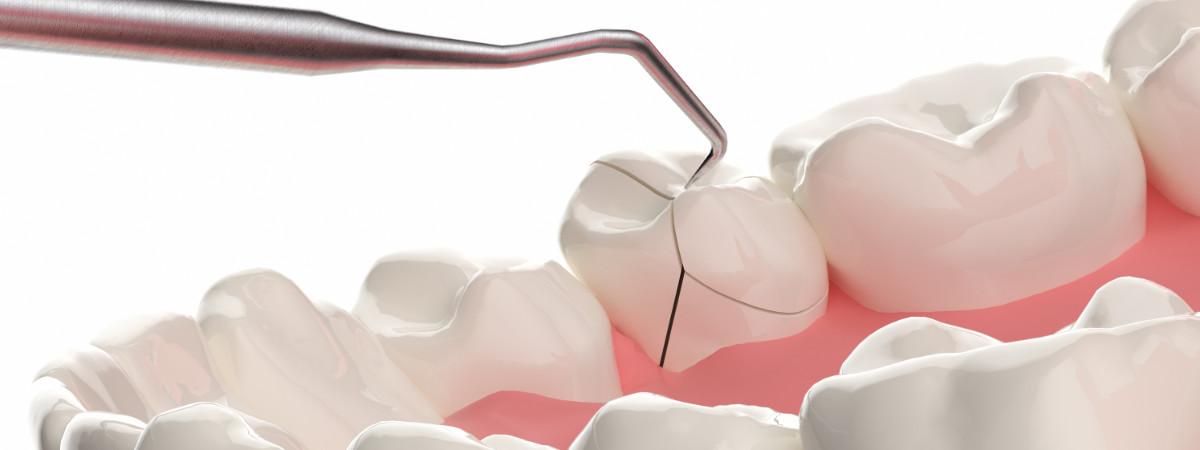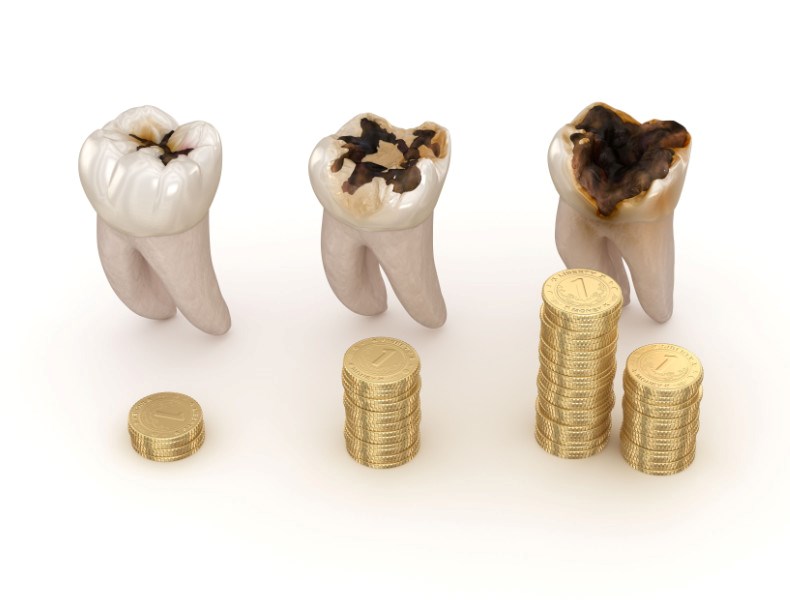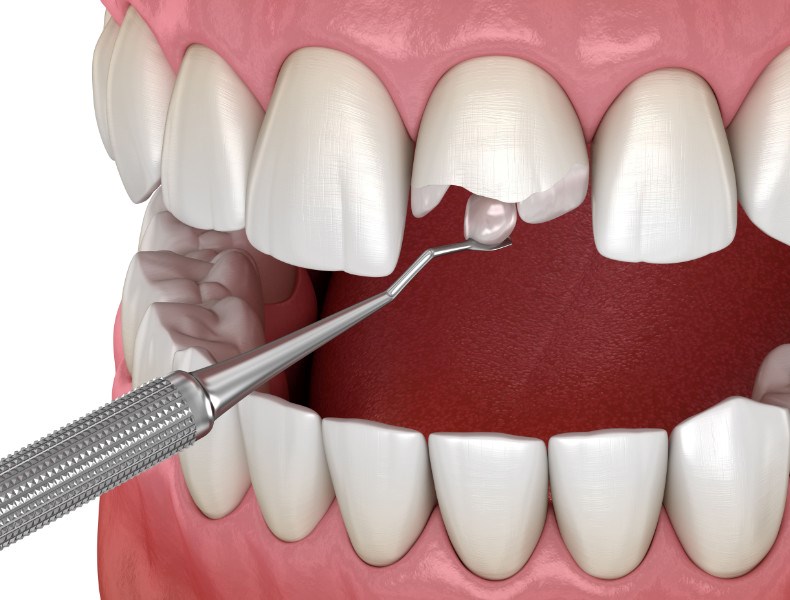Tooth build-up is a procedure where a post is used to restore the missing part of a tooth, providing a stable foundation for a crown or further prosthetic treatment.


Metal build-ups were used in the past, but we now avoid them due to the risk of vertical tooth fractures. In patients who already have a metal build-up, replacement is rarely an option, as attempting to remove it could lead to a vertical root fracture.

Posts are sometimes placed in teeth as a preventive measure to reduce the risk of fracture. This is done in cases of non-vital teeth (teeth without a nerve), where the structure has been significantly weakened by decay and/or repeated fillings.
In order to place a build-up, the root must be properly treated - this means the nerve must be thoroughly removed and the root canal must be filled three-dimensionally.
Once the root has been professionally prepared, the post is cemented into place as the foundation for the build-up.
A ceramic crown is then cemented over the build-up. Depending on the patient's preferences and budget, the crown can be metal-based, gold-based, zirconia-based, or made entirely of ceramic.
The first step is root canal treatment, which involves removing the dental pulp (tooth nerve) from the root canals.
This step is essential, as build-ups are placed only in non-vital teeth.
The post (also called a dental pin) is placed into the root canal and cemented to ensure stability and retention.
The part of the post that extends beyond the root serves as the foundation for reconstructing the tooth crown.
At Centrodent, we use glass-ceramic posts for tooth build-ups due to their excellent strength and durability. These posts are more aesthetically pleasing, biocompatible, and long-lasting.
Tooth build-up is not painful, as the procedure is performed under local anaesthesia.
During the process, the patient may feel pressure but no pain. If the tooth has already been root-treated, anaesthesia is often not even needed, since the nerve is no longer present.
It’s essential that the entire procedure is carried out with precision and proper diagnostics—this ensures the process is comfortable and the build-up is stable and long-lasting.
If there is any sensitivity or discomfort afterwards, it’s usually mild and temporary, and can be easily managed with a simple pain reliever.
A post and core build-up is a procedure in which a dental post is placed into the root of the tooth to replace lost structure and provide a solid foundation for a future crown.
This is the same treatment patients often refer to simply as a “tooth build-up” - the difference is only in terminology, not in the procedure itself.
It is most commonly performed on teeth that have been weakened after root canal treatment, when there is not enough healthy tooth structure left to support a filling.
The procedure is painless, completed in a single visit, and plays a key role in preserving the natural tooth.
There are several types of tooth build-ups, based on the materials used to reconstruct the tooth.
Each type has its own advantages and indications, depending on the tooth’s position, functional load, and aesthetic demands:
Metal posts (usually alloy-based):
Very strong and durable, commonly used for back teeth that endure greater chewing forces. However, they are not ideal for front teeth due to their lack of aesthetics—metal can show through the crown, especially with thin enamel or all-ceramic restorations.
Glass fiber posts:
Made of a translucent material, they bond well with composite and don’t show through the tooth. Their natural look makes them suitable for front teeth. They are also slightly more elastic, which lowers the risk of root fracture.
Carbon fiber posts:
Darker in color and used less frequently. While they offer good strength, their poor aesthetics limit their use in visible areas of the mouth.
Ceramic posts (rarely used):
Highly aesthetic but more brittle and expensive. Typically used in cases with very high aesthetic demands and specific clinical indications.
In modern dental practice, glass fiber posts are most commonly used because they offer a good balance of strength, flexibility, and appearance. The choice of material depends on each patient’s individual needs, the treatment plan, and the specific location of the tooth in the mouth.
A composite tooth build-up is a procedure used to restore a damaged tooth using modern composite material, with the goal of bringing back its strength, shape, and function.
It is most commonly performed on teeth that have undergone root canal treatment and no longer have enough natural structure to support a crown or bridge.
In such cases, a post - usually made of glass fiber or metal - is first placed into the root canal to act as an anchor.
Around this post, the composite material is carefully layered and shaped, then hardened with a special curing light. This forms a stable core that can later support a crown.
Composite build-ups help preserve the remaining tooth structure, restore proper bite alignment, and ensure long-term stability of the treatment. They are also aesthetically pleasing, as the material can be color-matched to blend with the surrounding teeth.